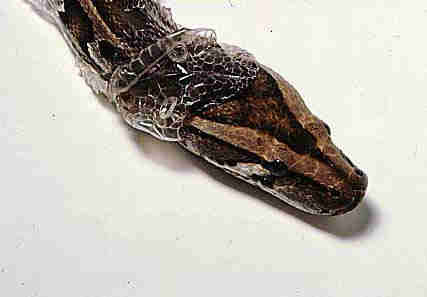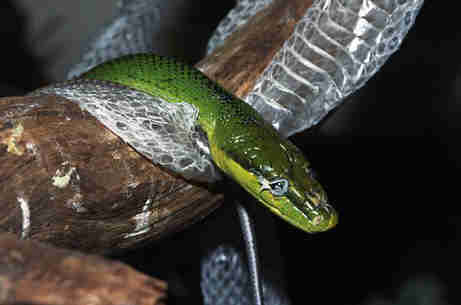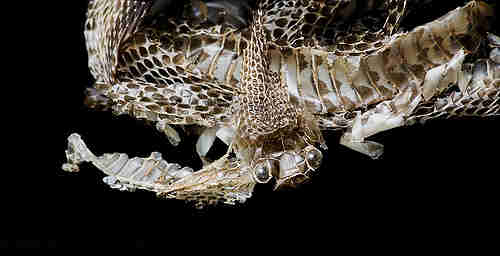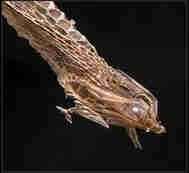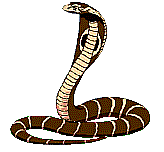
Snake Moulting

|
The moulting process is called skin-shedding. For a short time before moulting, a snake is less active than usual. The animal's eyes become clouded because the skin covering the eyes is shed along with the rest of the skin. The snake loosens the skin around the mouth and head by rubbing its nose on a rough surface. The snake then crawls out of the old skin, turning it inside out in the process.
How often a snake moults depends chiefly on its age and how active it is. Young snakes shed more often than old ones. Snakes that live in warm climates are active for longer periods than those that live in cooler climates. As a result, they moult more frequently. Some pythons of the tropics shed six or more times a year. In contrast, some North American rattlesnakes average two or three moults a year. A new section may be added to the rattle on the tail each time they moult.
A snake's colour comes chiefly from special pigment cells in deep layers of the skin. But some colour may be due to the way light is reflected from the surface of the scales. The moulted skin is pale yellow or white.
Most snakes have a drab colouring that matches their surroundings. For example, the North American copperhead has brown bands that blend with the dead leaves on the forest floor where it lives. Some snakes have bright colours. For example, the coral snakes of North America have bright bands of black, red, and yellow or white. In some cases, snakes of the same species have different colour patterns. For example, some California king snakes are black with white bands across the width of the body. Others have white stripes that extend the length of the body. Great Plains ground snakes have a wide variety of markings. Some are tan or brown with many red bands, and some have a red band only around the neck. Others have a red stripe down the middle of the back. Still others are solid tan or brown, without any markings. |

